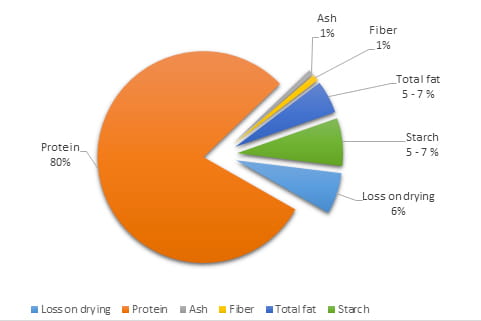

Worldwide demand for fish is increasing. Sustainable aquaculture requires sustainable feed whose production affects the environment, for example, through the use of fish meal and fish oil resources.
Why replace animal proteins in aquaculture?
Replacement of animal proteins with plant proteins is necessary in aquaculture in order to meet three challenges: availability, quality and sustainable development.
Thanks to its outstanding nutritional performance, wheat protein is widely used as a high-quality, very digestible and concentrated protein source for the nutrition of a wide variety of animal species: from piglets, and calves to dogs, cats and fishes; and especially for salmon, trout, char, eel, sea bass, sea bream, turbot and cod.
In addition, vital wheat protein displays outstanding digestibility in aquafeed:
- 97% rainbow trout (Danis et al. 1997)
- 100% silver perch (Geoff L Allan 1996)
- 98% sea bass (Tibaldi 2001)
- 95% to 100% penaeus monodon (Cuzon 1992)
- 98% Penaeus Vannamei (Cuzon 1992)
Roquette wheat protein
It is a highly concentrated protein derived from wheat flour and obtained in a non-chemical wet extraction.
Composition of Roquette wheat protein

The advantages for the aquafeed producer:
- From a technical perspective, Roquette wheat protein optimises extruded pellet quality. Indeed, wheat protein has unique functionalities that enable:
- Waste reduction, leading to a reduction in manufacturing costs.
- Standardization of the manufacturing process (extrusion or press pelletization), provides more flexibility in the variability of other raw materials (fish meal, cereals,etc).
- Better control of pellet expansion and pellet density.
- Better durability: less dust, fewer feed losses and less pollution.
- More homogeneity in pellet size.
Last but not least, the wheat protein’s composition is unique, making it the ideal plant protein for aquafeed:
- Low ash, low fiber.
- Neither phytic phosphorus, nor anti-nutritional factors.














